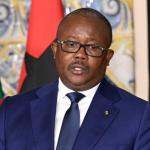In a groundbreaking medical achievement, South African otolaryngologist Professor Mashudu Tshifularo became the first surgeon in the world to cure deafness using 3D-printed middle ear implants successfully. This revolutionary procedure, performed at the Steve Biko Academic Hospital in Pretoria, has redefined the possibilities of auditory restoration and brought hope to millions.
A Medical Breakthrough
On March 13, 2019, South African surgeon and innovator Professor Mashudu Tshifularo made history by performing the world’s first middle-ear transplant using 3D-printed bones. This groundbreaking procedure, conducted at Steve Biko Academic Hospital in Pretoria, has revolutionized the treatment of conductive hearing loss, offering new hope to millions worldwide.
The pioneering surgery involved replacing damaged middle ear bones—the hammer (malleus), anvil (incus), and stirrup (stapes)—with 3D-printed replicas tailored to the patient’s anatomy. Using advanced imaging techniques like 3D scanning, Prof. Tshifularo and his team designed biocompatible implants that mimic these ossicles' natural structure and function. The implants were then surgically implanted using minimally invasive techniques, significantly reducing recovery time and improving hearing outcomes.
This innovation marks a significant leap forward in treating conductive hearing loss caused by trauma, infections, or congenital defects. Traditional treatments often relied on prosthetics or complex surgeries with limited success rates. Prof. Tshifularo’s approach not only enhances precision but also offers a more affordable and accessible solution for patients worldwide.
The First Successful Cases
The first patient to benefit from this technology was a 40-year-old man who had suffered traumatic hearing loss. Another patient, born with an underdeveloped middle ear, also successfully underwent the procedure. Both cases demonstrated remarkable improvements in hearing, showcasing the potential of this technology to transform lives.
Prof. Tshifularo’s work has been hailed as a milestone in medical innovation. It combines cutting-edge 3D printing technology with personalized healthcare solutions. By creating implants that are anatomically accurate and customized to individual patients, he has set a new standard for reconstructive surgery in otolaryngology.
A Visionary Leader in Medicine
Prof. Tshifularo is not just a surgeon but also an educator and innovator dedicated to advancing medical science in Africa and beyond. As the head of the Department of Ear, Nose, Throat, Head, and Neck Surgery at the University of Pretoria, he has spent years researching ways to improve treatments for hearing loss. His inspiration came from observing the success of 3D printing in other medical fields like orthopedics and urology, motivating him to explore its potential in ENT procedures.
Despite facing challenges such as limited funding and technological hurdles, Prof. Tshifularo’s determination never wavered. “This is a major step forward for both African innovation and global healthcare,” he stated after his groundbreaking surgery.
Impact on Global Healthcare
The implications of this breakthrough extend far beyond South Africa. By leveraging 3D printing technology, Prof. Tshifularo has paved the way for more accessible healthcare solutions in underserved regions where hearing loss often goes untreated due to resource constraints. His work is a testament to Africa’s growing role in global medical innovation and serves as an inspiration for future advancements in personalized medicine.
As 3D printing continues to evolve, its applications in medicine are expected to expand further, offering new possibilities for treating complex health conditions. Prof. Tshifularo’s achievement is not just a technological triumph but a beacon of hope for millions worldwide who dream of regaining their ability to hear.
Leave a comment
Your email address will not be published. Required fields are marked *




